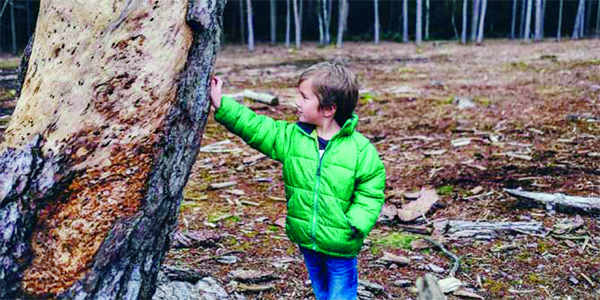
Md Altaf Hussain :
We know that climate change is making heat waves hotter and longer, and more heat means more kids aren’t able to go outside and play. This is a critical issue because the number one health challenge facing our children today is obesity. More heat also makes more ozone, an air pollutant that’s harmful to our lungs, and especially the lungs of kids with asthma.
Ozone can also harm pregnant women and their growing fetuses as air pollution is associated with early birth and small babies, which can lead to lifelong health problems.
With climate change, we’re also seeing more heavy downpours and droughts. Heat plus droughts can cause wildfires, and wildfires produce severe air pollution that worsens asthma attacks and can promote respiratory infections, including pneumonia.
Kids face unique health burdens because of climate change, according to the American Academy of Pediatricians (AAP), including “the broad effects of weather disasters, exacerbated allergic and asthmatic diseases, food and water insecurity, and heat-related deaths.”
Pediatricians are already seeing the effects of climate change in their patients. Because of climate change, winters are shorter, making outdoor allergy seasons longer and warmer. This worsens allergies and increases the chances of asthma symptoms.
We know that climate change is making heat waves hotter and longer, and more heat means more kids aren’t able to go outside and play. This is a critical issue because the number one health challenge facing our children today is obesity. More heat also makes more ozone, an air pollutant that’s harmful to our lungs, and especially the lungs of kids with asthma.
Ozone can also harm pregnant women and their growing fetuses as air pollution is associated with early birth and small babies, which can lead to lifelong health problems.
With climate change, we’re also seeing more heavy downpours and droughts. Heat plus droughts can cause wildfires, and wildfires produce severe air pollution that worsens asthma attacks and can promote respiratory infections, including pneumonia.
Kids face unique health burdens because of climate change, according to the American Academy of Pediatricians (AAP), including “the broad effects of weather disasters, exacerbated allergic and asthmatic diseases, food and water insecurity, and heat-related deaths.”
Pediatricians are already seeing the effects of climate change in their patients. Because of climate change, winters are shorter, making outdoor allergy seasons longer and warmer. This worsens allergies and increases the chances of asthma symptoms.
Children are especially vulnerable to both the immediate and long-term impacts of climate-fueled natural disasters. The imminent threat to children from extreme weather is clear: They’re smaller and less physically capable than adults. They spend more time outside, increasing their exposure to dangerously high heat and more. They often rely on
others for decision-making and care, leaving them especially vulnerable during and immediately after emergencies like flash flooding.
We know that by reducing our dependence on fossil fuels like coal, oil, and natural gas-which are the major contributors to climate change-we can improve children’s health right now. For instance, by burning less fossil fuel, we can reduce air pollution, which, as mentioned above, is associated with various health problems including asthma. When the air quality is too dangerous, we stop kids from playing outside, which is way climate change impacts obesity. Improving air quality can help prevent this.
Moreover, when we take steps to build our cities and infrastructure with climate change in mind, we’ll see immediate improvements in our children’s health. When we use more renewable energy and create more green space, our cities will be cooler and have less air pollution. When our communities are designed to promote public transportation and walking, we’ll have healthier environments for kids.
Our kids are learning more about our changing world than we did. When they tell us that they want change, we must listen and voice their desires. A livable climate can’t wait until they take on positions of authority.
Many towns and cities want to decarbonize-in fact they’re leading on this issue-and parents can play a role in shaping those efforts. When your neighborhood is getting redeveloped, ask that plans be made to make it easier to walk and bike safely, ask for green space and access to public transit. These actions will benefit everyone’s health and especially the health of our children.
We know that by reducing our dependence on fossil fuels like coal, oil, and natural gas-which are the major contributors to climate change-we can improve children’s health right now. For instance, by burning less fossil fuel, we can reduce air pollution, which, as mentioned above, is associated with various health problems including asthma. When the air quality is too dangerous, we stop kids from playing outside, which is way climate change impacts obesity. Improving air quality can help prevent this.
Moreover, when we take steps to build our cities and infrastructure with climate change in mind, we’ll see immediate improvements in our children’s health. When we use more renewable energy and create more green space, our cities will be cooler and have less air pollution. When our communities are designed to promote public transportation and walking, we’ll have healthier environments for kids.
Our kids are learning more about our changing world than we did. When they tell us that they want change, we must listen and voice their desires. A livable climate can’t wait until they take on positions of authority.
Many towns and cities want to decarbonize-in fact they’re leading on this issue-and parents can play a role in shaping those efforts. When your neighborhood is getting redeveloped, ask that plans be made to make it easier to walk and bike safely, ask for green space and access to public transit. These actions will benefit everyone’s health and especially the health of our children.

